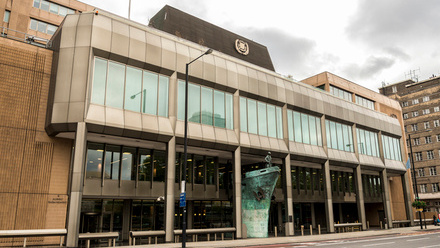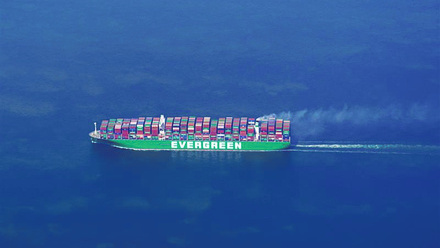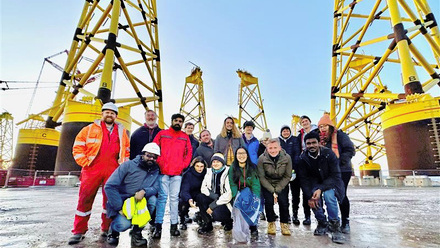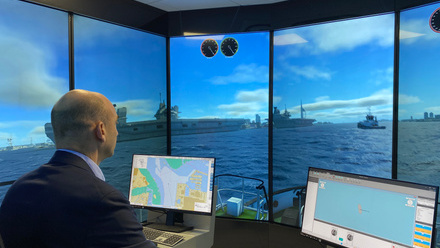Container shipping optimistic in the face of global conflict and uncertainty
Despite the triple threat of tariffs, port strikes, and geopolitical tensions, goods and commodities are expected to continue their flow around the world in relatively calm waters.
Uncertainty is the word that best describes the current mood in the container freight market. While the year started with some hope of a return to normalised trade routes as Israel and Hamas agreed a temporary ceasefire, the first weeks of the new White House administration have left market watchers jittery, with a barrage of pronouncements on tariffs, Greenland and Gaza ramping up the nerves.
Over the last year, container shipping rates have been significantly higher than expected because of the attacks on commercial shipping by the Houthi in Yemen. Those attacks forced all the major lines to divert from the Red Sea and Suez Canal to go instead via the Cape of Good Hope, adding an extra 10-14 days to the voyage on average and soaking up excess capacity in the market.
In January 2025, the Israel-Gaza ceasefire saw the Houthi lift its threat to international shipping (other than to Israeli-owned and flagged vessel) and the 25-member crew of the MV Galaxy Leader were released after over a year of being held hostage. Another looming disruption – the threat of a coast-wide port strike in the US – has also receded and, as a result of these positive outcomes, container rates took a hit.
Indeed, the World Container Index (WCI) maintained by Drewry, plunged 11% in a week on the news to $3,445 per feu (forty-foot equivalent unit). A gradual normalisation of trade routes as lines return to the Red Sea and Suez Canal transits is expected to see more capacity released as the year progresses, although major lines, including Maersk, Hapag-Lloyd and MSC, will likely continue with Cape of Good Hope transits until the picture is clearer.
At A.P. Moller Maersk, the cessation of Houthi attacks was welcomed as “a step in the right direction towards stability and eventual normality for the global shipping industry” but the spokesperson added that “the predictability of the situation remains a complex challenge” and the “security risk of commercial vessels transiting the Red Sea and Bab-el-Mandeb strait remains high”.
The shipping giant said it would continue to sail around Africa via the Cape of Good Hope until safe passage through the area is ensured for the longer term in order to “optimise stability and certainty” for its customers.
Freight analysts at HSBC Global Research expect the supply of tonnage to stay tight over the coming months as lines take until the mid-2025 to revert their networks between Asia – Europe/Med and US East Coast to transiting via the Red Sea and Suez Canal rather than diverting via the Cape of Good Hope.
They don’t expect a hard landing in spot rates, however, as blank sailings, alliance reshuffles and uncertainties around Trump’s tariffs are likely to act as a cushion. Working on a base case of mid-year return to the Red Sea, the HSBC analysts said that 10.5% capacity growth is implied for 2025 versus a volume growth of 2.7% and reduction in TEU (twenty-foot equivalent unit) miles.
A new wave of tariffs
Many analysts will be revisiting their models, however, should President Trump’s statements of early February, targeting not only China with trade tariffs, but also traditional allies in Canada, Mexico and the EU, crystallise into real trade barriers. At the time of writing, it is too early to say, but the mood among many was nervous, as Trump’s interventions on Gaza ramped geopolitical tensions in that most contentious of areas.
Despite the growing mood of uncertainty, the major container shipping lines are confident they can handle any disruptions. After all, 2024 gave them good practice.
“We do not believe that there will be major impacts,” says a spokesperson for Hamburg-headquartered Hapag-Lloyd. “There might be some slight shifts here and there, but world trade will continue to work out.”
They pointed out that the group’s new alliance with Maersk, Gemini Cooperation, which launched on February 1st, 2025, will improve resilience for customers. “Gemini Cooperation will help to bring up schedule reliability and offer a wide East-West network for our customers,” they stated.
The alliance will deploy around 340 ships connecting the East and West of the globe, and aims to deliver a fast, flexible and interconnected ocean network with industry-leading reliability of over 90% once fully phased in by June 2025. A ‘hub and spoke’ operating system allows the partners to deploy larger vessels and thus optimise speed, reduce idling times to not only save time and resources for customers but also lower carbon emissions.
Sustainability remains a major focus for the major players. Hapag-Lloyd, for example, recently secured long-term financing for $4 billion for 24 large container ships it ordered from Chinese yards in October 2024, which will have a combined capacity of 312,000 TEU and will be equipped with low-emission and fuel-efficient high-pressure liquefied gas dual-fuel engines with the capability to run on biomethane and be ammonia-ready.
“We are continuously modernising our fleet in order to deliver a high quality of service and to achieve our ambitious decarbonisation goals,” said Mark Frese, CFO/CPO of Hapag-Lloyd in February 2025.
Delivery will take place between 2027 and 2029, adding to the world’s growing fleet of container ships that ply the ocean with the goods and commodities that fuel our modern world.
Tell us what you think about this article by joining the discussion on IMarEST Connect.
Image: Hapag-Lloyd and Maersk container ships; credit: Hapag-Lloyd.





